Cell is set to give a signal boost to a new kind of zombie movie
"It’s got a really clear beginning point, which is that… it’s really not a zombie film,” says director Tod Williams. “We ended up being surprised at how hard we had to work to make it not be a zombie film. Because Stephen King dedicated the book to Romero...” Williams is chatting to us from New York about his latest movie Cell, heading to our screens soon. And for a film that’s definitely not a zombie movie, there’s a lot of talk about zombies...
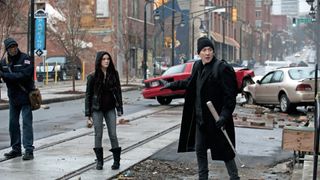
The premise, then: “It takes place one day, one fine day. Everybody who’s using their cell phone gets a signal in their ear that essentially wipes their brain clean and resets them to the sort of violent animal [state]. And there’s a series of revelations about what they’re actually becoming,” explains Williams. Based on a 2006 Stephen King novel, Cell is a mix of science fiction and the occult, with the strong family strand King’s works are known for. John Cusack plays New England artist and survivor of the pulse, Clay, who bands together with fellow survivors Samuel L Jackson and Isabelle Fuhrman to discover the source of the mysterious signal and to find and reunite with his son, while the mindless and violent ‘Phoners’ are growing more organised and more threatening.
Unlike zombies then, King’s Phoners aren’t undead and decomposing and they can still talk. “It’s not something you can catch, but there’s ways – ‘The Pulse’ [as the original signal is called] continues to find victims,” says Williams. “So the thing grows. But essentially, yeah, it’s about one moment in time when most people are either converted or not. People who are not, are almost immediately killed. So there are very few survivors left.
“But then there are moments when our little band of survivors almost becomes more brutal than the Phoners themselves. There’s a wonderful biologist at Harvard named Edward O. Wilson who writes about ‘eusocial animals’ [from the Greek ‘good/real + social’]. There’s social animals, which include the social and the eusocial animals – humans, ants, bees, wasps and termites – which have dominated the planet to an astonishing degree. Human beings are the most social. “But the eusocial animals, which are like the ants and the bees, are essentially one organism – so a hive of bees is not actually a group of individuals, but it’s one organism. And it’s very, very successful. There’s some selflessness in that that’s admirable. We thought a little bit about Wilson’s theories of eusocial animals, in terms of what these creatures are.”
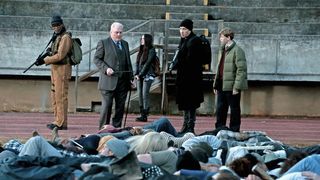
Williams says despite a modest budget we can still expect action set-pieces. “What was fun to me was, unlike a lot of the great current crop of zombie things like The Walking Dead and 28 Days Later, which usually cut to some time after [the outbreak], we actually show the event, which was ambitious for a small film,” Williams says. While in the original novel Cusack’s character Clay experiences ‘The Pulse’ from Brooklyn Common, the film version has opted for a more claustrophobic environment, re-locating the key moment to an airport.
“Because of this book, I’ve become kind of anti-the internet, anti-cell phones, anti-anything-digital,” laughs Williams, talking to us via his cell phone. “As you think about it King sort of sees something satanic, almost, in the digital world. And the more I thought about it, the more convinced I became. But one of the places I feel we as a society allow ourselves to become our most base selves is once we pass through security in an airport. We give up our sense of responsibility. Airports have become these stations of consumption. People indulge massively in all kinds of ways. It was in airports that I felt people most connected, most wanted to be connected. You see people plugged into these power sources all the time. I don’t know. It just seems like, to me, the digital future is going to look and feel like that.
“A modern airport could be on the back side of the moon. It’s this digital, soulless environment. I love planes, but I’m talking about the other part, the fear-filled mall that precedes flying. After you’ve gone through security where you’ve given up your adult responsibility. What’s also interesting is that people aren’t armed. Once you get through security, you’ve all been stripped of your weapons in some way. So that’s where we find our hero when ‘The Pulse’ happens.”
Sign up to the SFX Newsletter
Get sneak previews, exclusive competitions and details of special events each month!
Shot in January 2014 over 25 days in a combination of real locations and sets in Atlanta, Georgia, the airport scene was partially created in a convention centre, with Williams and the director of photography given permission to go to a real airport later to get further environment shots (“So we’re interlacing reality with our created reality”). But Atlanta came with some baggage too in the form of The Walking Dead (much of which is shot in that area).
“We’re looking for things we need to put in our apocalyptic city, which we’re not in very long and my team found me this burned-out bus, and they were like, ‘This is so awesome, this burned-out bus. We can drag it here. It’ll look great,’” Williams recalls. “But that burned-out bus was in the pilot of The Walking Dead. I was like, ‘Come on, man.’ The challenge of shooting in Atlanta was avoiding The Walking Dead. And yet, there were also some really great experienced people that we called upon who were Walking Dead alumni – both to learn what they knew, and avoid what they had done. One of the things we had to very quickly figure out is how do these creatures move. It’s really easy to say to an extra, ‘Stagger around.’ But instantly they look like The Walking Dead.”
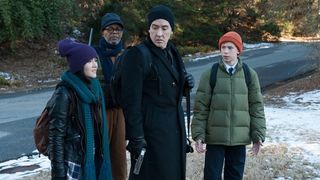
The team had to call in a different kind of expert to develop their own unique set of movements, which adapt and change as the Phoners evolve throughout the film. “We went over to the Joffrey Ballet in Chicago and got a bunch of dancers to workshop with us and a bunch of improv actors. We spent three or four days just trying to come up with movements that reflect more like flocking behaviour, rather than zombie behaviour,” William says.
“We found some stuff we really liked. Then on weekends, we invited a group of local dancers to spend their Saturdays with us, as we ran around in large groups trying to teach people how to move. And it really helped. It was done as volunteers, really. The second somebody would start moving like a Walking Dead zombie, I’d have to cut. Cut and reset.” Williams is probably best known as the director of Paranormal Activity 2 though he previously also adapted and directed the John Irving novel The Door In The Floor starring Jeff Bridges and Kim Basinger, so Williams says he wasn’t necessarily looking to do another horror when Cell came along. According to Williams it was the stars who initially swayed him.
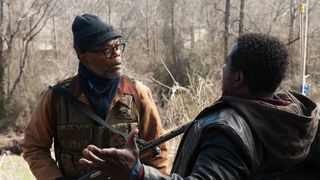
“The project came to me with John Cusack already on board. John is a huge fan of the Romero films, and very knowledgeable about all things zombie,” says Williams, and when Jackson signed up he couldn’t have been happier. “John is an unbelievably warm-hearted person, and Sam’s a pro and a gentleman. [Working with them] is kind of like getting in a BMW 7 Series. It’s easier to drive because you’re in the bomb!”
Mixing technophobia with insect psychology, zombie tropes with ballet moves, Cell looks set to be a complex epic. Williams assures us there’ll be hints of humour too, as well as a mix of practical and digital effects (“in a movie that’s a sort of anti-digital manifesto,” smiles Williams, aware of the irony, “but sometimes you can’t be a purist”). It may not be a straight up zombie movie but it still has its roots buried in horror.
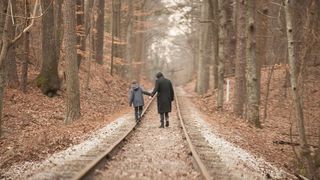
“There’s some gore in it, but I wouldn’t say it’s excessively gory,” considers Williams. “I think that the experience of the film is very tense. I’d say there’s a sense of suspense throughout the entire thing, that you’re living in a world you’re unsure of. It’s unlike the zombies that we’ve come to know, where you understand the rules, which are: they bite you, you turn into a zombie; if you shoot them in the head, they die. That’s very consistent.
“What Stephen King is more interested in isn’t a static set of rules. It’s a continually changing evolution of some future version of humanity. So, there’s a lot of mystery in what’s happening. King is comfortable with mystery remaining. I think that’s what draws me to it. It’s unresolved, unlike a lot of horror. I think that’s something I’m a huge proponent of, and something I loved when I worked on the Paranormal movies – especially the early ones. There’s a desire to layer rules onto things. For me, when you get rules, you start getting away from the subconscious and away from the mystery, away from the unknown,” he ponders. “And that’s the heart of horror.”
Coming to Cinemas later in 2016 from Signature Entertainment. Images: Signature Entertainment.
If you want to get an even bigger Zombie fix, check out Zombies: The Ultimate Celebration.
Rosie is the former editor of Total Film, before she moved to be the Special Edition Editor for the magazine group at Future. After that she became the Movies Editor at Digital Spy, and now she's the UK Editor of Den of Geek. She's an experienced movie and TV journalist, with a particular passion for horror.
Most Popular

